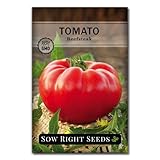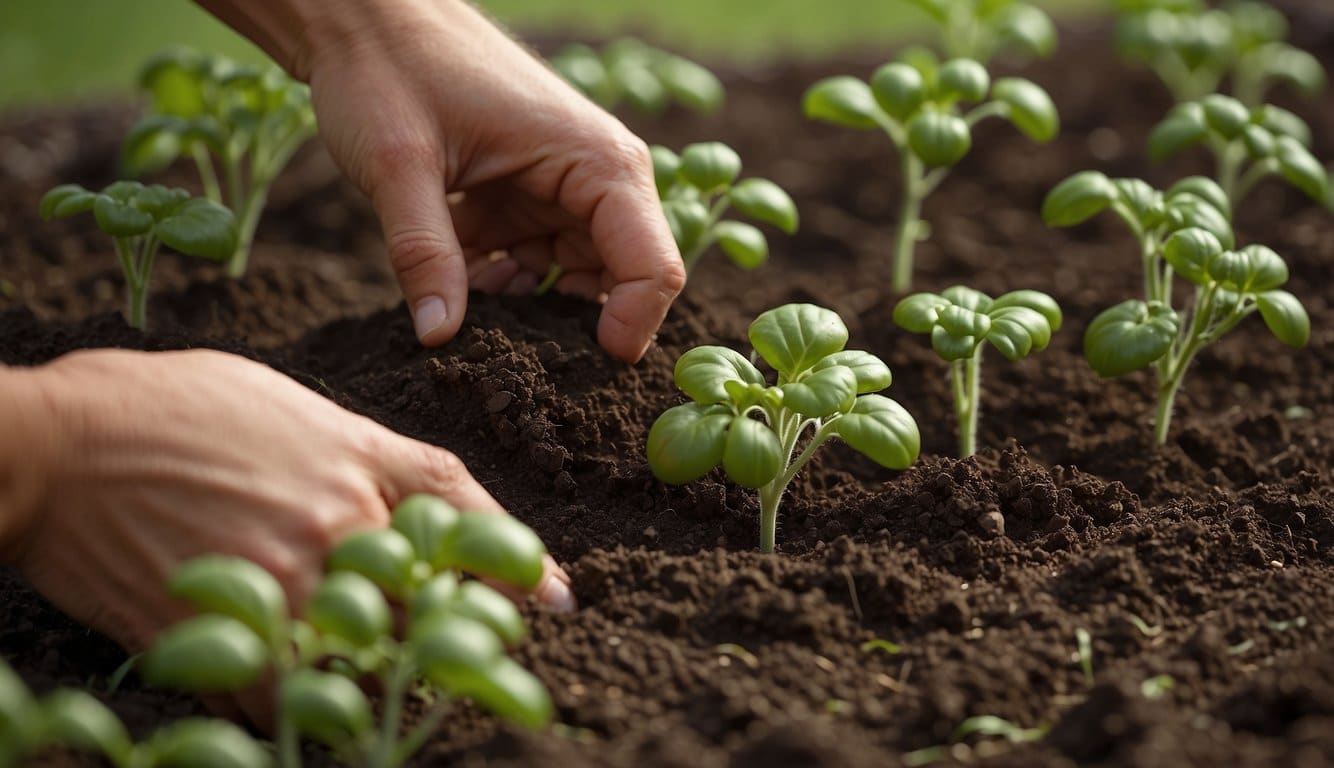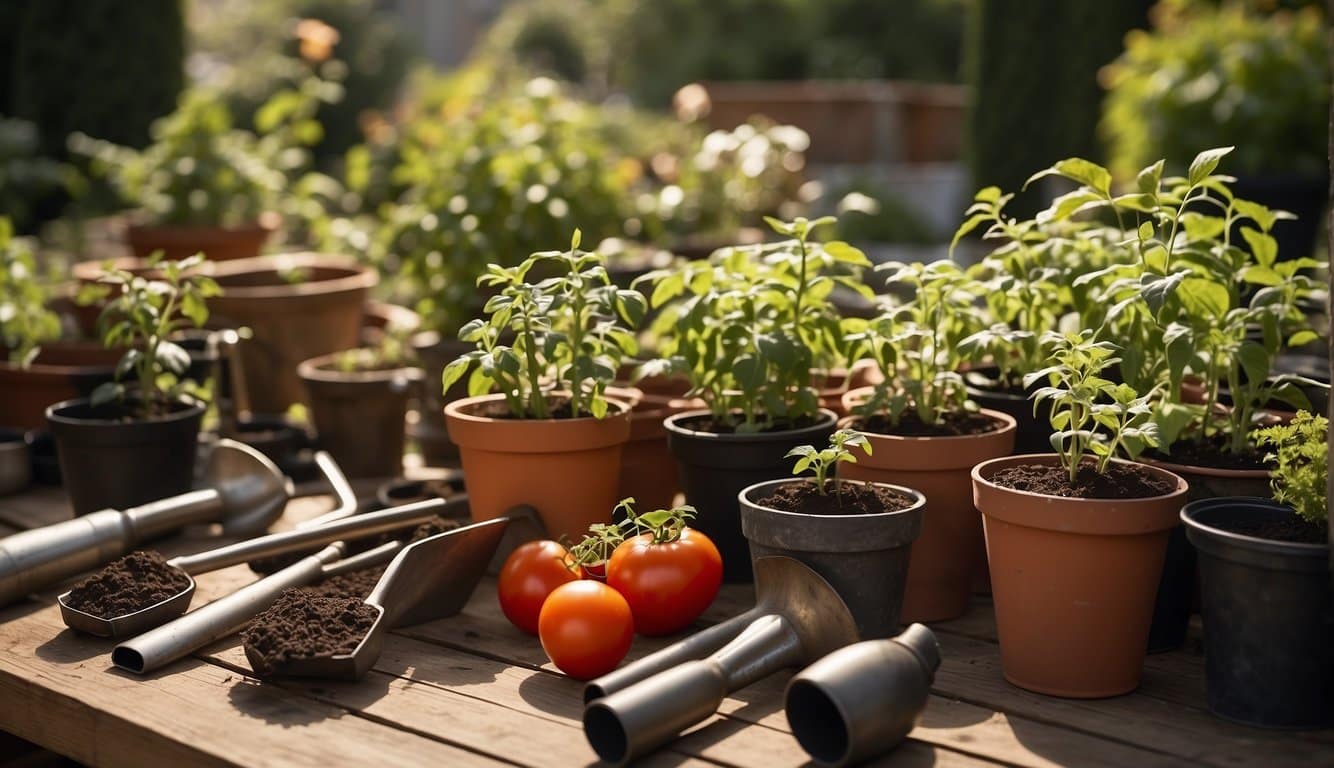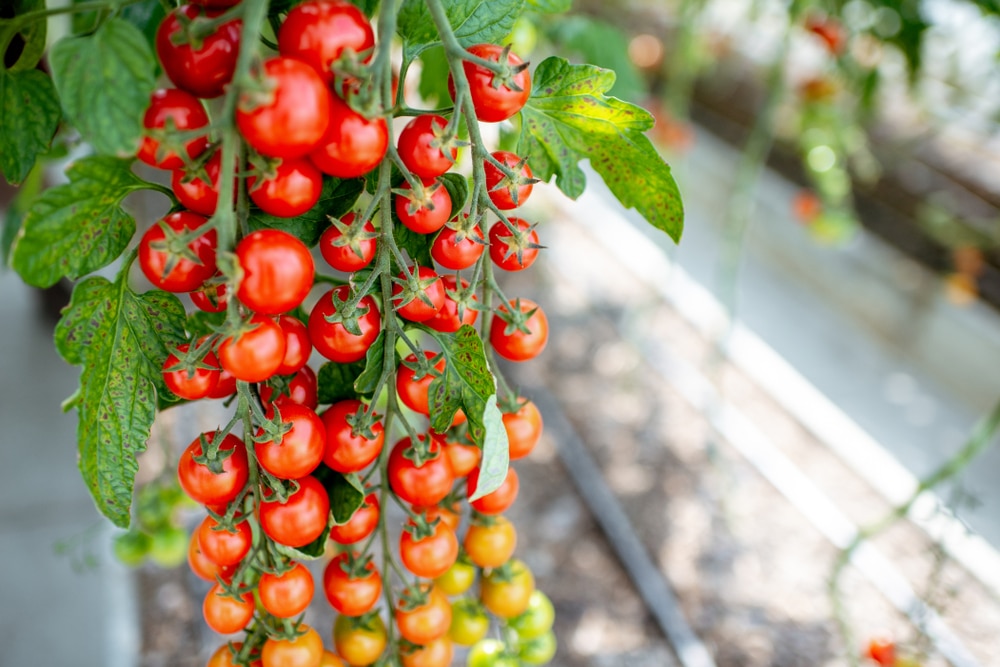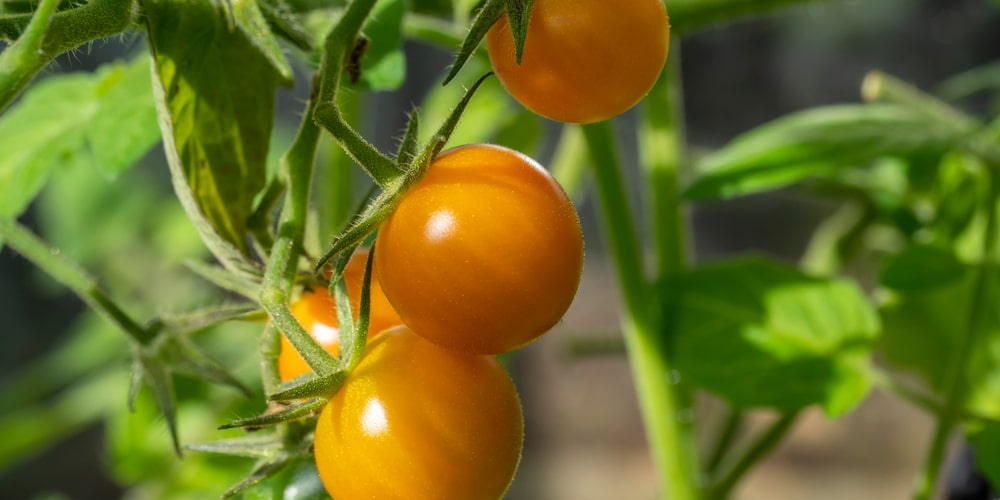| Question | What’s the best time of year to plant tomatoes in Connecticut? |
|---|---|
| Answer | After the last frost date, usually late May to early June. |
| More Info |
|
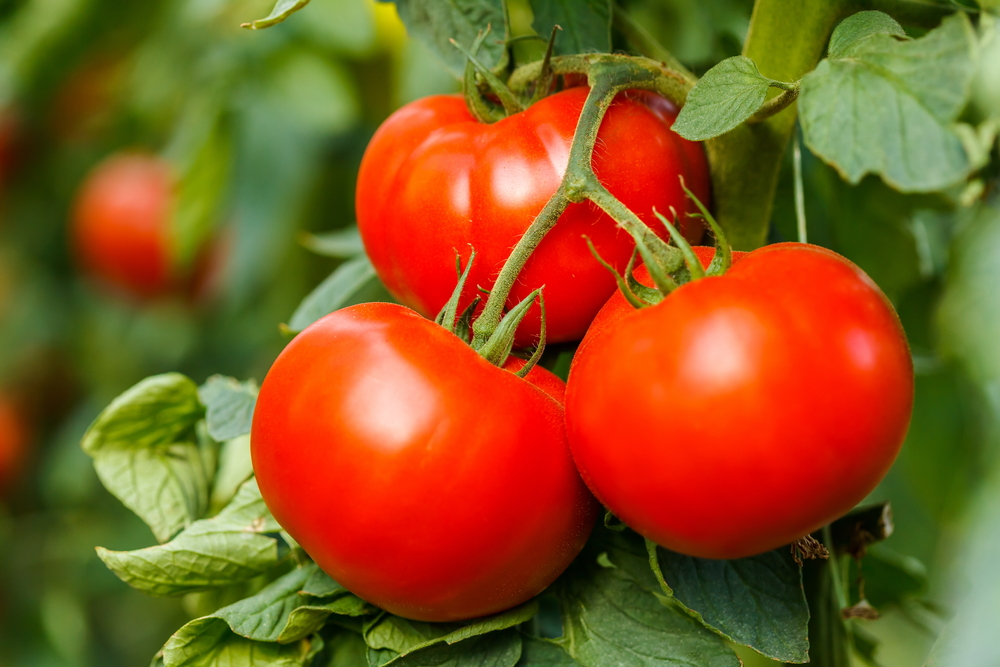
In Connecticut, the optimal time to plant tomatoes is after the danger of frost has passed, which typically falls in late May to early June.
Given Connecticut’s climate, starting tomato seeds indoors around 6-8 weeks before the expected last frost date is a common practice.
This approach allows the seedlings to be strong enough to transplant outdoors when the weather warms sufficiently. For gardeners considering a second crop in the same year, a late summer planting might be challenging due to the early onset of fall conditions, so focus is usually on maximizing the main growing season.
Ideal Planting Dates for Tomatoes in Connecticut
When considering the ideal time to plant tomatoes in Connecticut, gardeners should focus on the period after the last average frost date. This is typically around late May to early June.
The precise timing can vary depending on the microclimate of different regions within the state.
Starting Indoors: Planting tomatoes begins indoors. Gardeners should start seeds approximately:
- 40-60 days before transplanting outside.
- 6-8 weeks before the last frost date.
Transplanting Outdoors:
- Late May to Early June – Best time for most of Connecticut.
- Local Weather Variations – Check local forecasts as dates can fluctuate.
Local Frost Dates Areas in Connecticut may have varied microclimates affecting the frost dates hence the planting times. It is important to note these approximate local frost-free dates:
| Location | Last Frost | First Frost |
|---|---|---|
| Hartford | May 14 | September 24 |
| West Thompson | June 4 | September 13 |
*Table is for illustrative purposes and might not cover all locations.
Soil Preparation: Before transplanting:
- Ensure soil is well-drained and has been enriched with compost or other organic matter.
- A site with full sun is critical for the growth of tomatoes.
Preparing for Tomato Planting
Successful tomato cultivation in Connecticut begins with careful preparation and an understanding of regional climate conditions. Gardeners must select appropriate tomato varieties and prepare the soil meticulously to ensure a bountiful harvest.
What Tomato Varieties Thrive in Connecticut
When choosing tomato varieties for Connecticut gardens, one should consider the local climate which falls within the USDA Hardiness Zones 5b to 7a. This influences the tomato types best suited for the area.
Generally, tomato varieties with a shorter growing season thrive here, given the state’s length of the growing period.
Recommended Tomato Varieties:
- Early Season: ‘Early Girl’, ‘Fourth of July’
- Midseason: ‘Big Beef’, ‘Celebrity’
- Late Season: ‘Brandywine’, ‘Amish Paste’
Heirloom varieties such as ‘Brandywine’ are beloved for their flavor but may require more care, while hybrids like ‘Celebrity’ offer disease resistance and consistent productivity.
Soil Preparation and Amendments
Prior to planting tomatoes, the soil must be well-prepared to promote healthy growth. In Connecticut, the ideal time to enrich the soil is in the spring, once it’s warm and workable.
The soil should be rich in organic matter and well-draining to prevent waterlogged roots.
Soil Amendment Checklist:
- pH Level: Ensure the soil pH is between 6.0 and 6.8. Lime can be added to raise the pH, or sulfur to lower it.
- Organic Matter: Integrate compost or aged manure to enrich the soil.
- Drainage: Mix in perlite or sand if the soil is too clayey to improve drainage.
- Nutrients: A balanced 10-10-10 fertilizer can provide initial nutrients; however, specific tomato fertilizers are available for optimal growth.
The success of tomatoes in Connecticut heavily relies on starting with soil that allows roots to receive adequate oxygen, nutrients, and moisture throughout the growth cycle.
Caring for Tomatoes Throughout the Season
Successfully growing tomatoes in Connecticut requires consistent care. Key elements include proper watering and mulching techniques, support systems like staking or caging, and vigilant disease and pest management.
Watering and Mulching
Tomato plants thrive with consistent moisture levels; gardeners in Connecticut should aim for about 1 to 2 inches of water per week.
Drip irrigation systems deliver water directly to the roots and can be more efficient than overhead watering.
Mulching with straw or wood chips helps retain soil moisture and control weeds.
One can lay a 2-3 inch layer of mulch around the base of the plants, being careful not to touch the stems.
Staking or Caging
Tomatoes in Connecticut benefit greatly from support structures such as stakes or cages.
Determinate varieties may require less support, but indeterminate tomatoes will need sturdy cages or stakes to manage their growth.
It’s recommended to:
- Install supports at the time of planting to avoid root damage later on.
- Use at least a 5-foot tall stake or cage for indeterminate varieties.
- Secure plants with soft ties, allowing for growth without injuring the stems.
Disease and Pest Management
Gardeners must be watchful for signs of diseases like blight or pests such as hornworms.
Some steps to manage these challenges include:
- Regular inspection for spots on leaves or damaged fruit.
- Removing affected leaves and disposing of them outside the garden area.
- Using insecticidal soaps or neem oil for pest control, applied according to package directions.
Maintaining proper spacing between plants allows for air circulation, reducing the risk of fungal diseases.
One should also rotate their tomato crops each year to different areas of the garden to prevent disease build-up in the soil.
Harvesting and Storage Tips
When the time comes to harvest tomatoes in Connecticut, gardeners should monitor their plants closely.
Typically, tomatoes are ready for harvest 65 to 85 days after seeding, or 40 to 50 days following transplanting into the garden. In Connecticut, this usually aligns with early August through September.
Determining Ripeness:
- Color: Tomatoes should have a uniform hue, specific to their variety.
- Firmness: They should yield slightly under pressure but not be too soft.
- Size: Tomatoes generally reach a size indicative of their variety before they’re ripe.
Once harvested, proper storage is crucial to maintain the quality of the tomatoes.
They are best kept at a cool and dry place, away from direct sunlight.
A common mistake is refrigerating tomatoes, which can lead to a loss of flavor and a mealy texture.
Ideal Storage Conditions:
- Temperature: Keep at about 55-70°F (13-21°C), if possible.
- Humidity: A moderate level of humidity is preferable.
- Ventilation: Ensure good air circulation to prevent condensation and potential spoilage.
To extend the shelf life of tomatoes, consider preserving methods such as canning, drying, or freezing.
Each method has its parameters and guidelines to ensure the tomatoes retain as much of their natural flavor and nutritional value as possible.
Gardeners should consult reliable resources for detailed instructions on preservation techniques.
Frequently Asked Questions
This section addresses common inquiries gardeners may have about starting and transplanting tomatoes in the distinctive New England climate.
When is the ideal time to start tomato seedlings indoors in Connecticut?
In Connecticut, gardeners should start tomato seedlings indoors 6 to 8 weeks before the last expected frost date. This typically falls between April and May.
What is the recommended date range for transplanting tomato plants outdoors in Connecticut?
Transplanting tomato plants outdoors is best done after the danger of frost has passed, generally from mid-May to early June.
Which factors should be considered when selecting a planting time for tomatoes in Connecticut’s climate?
One should consider frost dates, soil temperature, which ideally should be above 60°F, and the amount of daily sunlight, which should be at least 6 to 8 hours for tomatoes.
How does Connecticut’s growing zone affect the best planting time for tomatoes?
Connecticut spans USDA Hardiness Zones 5b to 7a, impacting planting times. Those in warmer zones may plant earlier, while cooler zones require later planting to avoid frost.
What are the late frost date considerations for planting tomatoes in Connecticut?
Planting should be timed to avoid late frosts, which can damage or kill tomato plants. It’s prudent to monitor local weather forecasts and have protective measures ready if a late frost is predicted.
How can I determine the last spring frost date for gardening in Connecticut?
Gardeners can determine the last spring frost date by consulting local agricultural extensions or reliable online gardening resources specific to Connecticut’s varied climate zones.
Last update on 2025-04-22 / Affiliate links / Images from Amazon Product Advertising API
